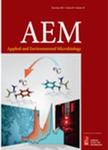版权所有:内蒙古大学图书馆 技术提供:维普资讯• 智图
内蒙古自治区呼和浩特市赛罕区大学西街235号 邮编: 010021

作者机构:Ph.D. Program in Medical Biotechnology College of Medical Science and Technology Taipei Medical University Taipei Taiwan Graduate Institute of Medical Sciences College of Medicine Taipei Medical University Taipei Taiwan International Master/Ph.D. Program in Medicine College of Medicine Taipei Medical University Taipei Taiwan International Ph.D. Program for Cell Therapy and Regeneration Medicine College of Medicine Taipei Medical University Taipei Taiwan School of Medical Laboratory Science and Biotechnology College of Medical Science and Technology Taipei Medical University Taipei Taiwan Core Laboratory of Antibody Generation and Research Taipei Medical University Taipei Taiwan Department of Medical Research Taipei Veterans General Hospital Taipei Taiwan Department of Biology and Anatomy National Defense Medical Center Taipei Taiwan Foundation for Poison Control Taipei Taiwan Department of Microbiology and Immunology School of Medicine College of Medicine Taipei Medical University Taipei Taiwan School of Medicine National Defense Medical Centre Taipei Taiwan Department of Post-Baccalaureate Medicine College of Medicine National Chung Hsing University Taichung Taiwan Division of Clinical Toxicology Department of Emergency Medicine Taichung Veterans General Hospital Taichung Taiwan Bioproduction Plants National Institute of Infectious Diseases and Vaccinology National Health Research Institutes Miaoli Taiwan Interdisciplinary Research on Ecology and Sustainability National Dong Hwa University Hualien Taiwan
出 版 物:《Applied and Environmental Microbiology》 (Appl. Environ. Microbiol.)
年 卷 期:2024年第90卷第8期
页 面:1页
核心收录:
学科分类:0710[理学-生物学] 1007[医学-药学(可授医学、理学学位)] 100705[医学-微生物与生化药学] 07[理学] 0828[工学-农业工程] 0901[农学-作物学] 0836[工学-生物工程] 071005[理学-微生物学] 10[医学]
基 金:This work received support from the National Science and Technology Council, Taiwan (MOST 109-2320-B-038-053 and MOST 110-2320-B-075A-001).We thank the members of the Yang Laboratory for providing valuable comments on the manuscript. Special thanks are due to Ms. Li-Ting Wang for her assistance in creating the schematic diagram. This work received financial support from the National Science and Technology Council, Taiwan (MOST 109-2320-B-038-053 and MOST 110-2320-B-075A-001). Conceptualization was done by W-.C. Wang, J. Chang, C-.H. Lee, Y-.W. Chiang, S-.J. Leu, Y-.Y. Yang, and C-.J. Wu formal analysis was done by W-.C. Wang funding acquisition was done by S-.J. Leu, Y-.C. Mao, and Y-.Y. Yang investigation was done by W-.C. Wang, J. Chang, C-.H. Lee, and Y-.W. Chiang methodology was done by W-.C. Wang and C-.H. Lee resources were acquired by Y-.W. Chiang, J-.R. Chiang, S-.J. Leu, C-.K. Yang, and Y-.Y. Yang supervision was done by J. Chang, Y-.Y. Yang, and C-.J. Wu validation was done by W-.C. Wang visualization was done by W-.C. Wang writing\u2014original draft\u2014was done by W-.C. Wang writing\u2014review & editing\u2014was done by W-.C. Wang, J. Chang, C-.H. Lee, Y-.W. Chiang, S-.J. Leu, Y-.C. Mao, Y-.Y. Yang, and C-.J. Wu. National Science and Technology Council MOST 109-2320-B-038-053 Sy-Jye Leu (NSTC) Yi-Yuan Yang National Science and Technology Council MOST 110-2320-B-075A-001 Yan-Chiao Mao (NSTC) Yi-Yuan Yang
主 题:Mammals
摘 要:Naja atra, the Chinese cobra, is a major cause of snake envenomation in Asia, causing hundreds of thousands of clinical incidents annually. The current treatment, horse serum-derived antivenom, has unpredictable side effects and presents manufacturing challenges. This study focused on developing new-generation snake venom antidotes by using microbial phage display technology to derive nanobodies from an alpaca immunized with attenuated N. atra venom. Following confirmation of the immune response in the alpaca, we amplified VHH genes from isolated peripheral blood mononuclear cells and constructed a phage display VHH library of 1.0 × 107 transformants. After four rounds of biopanning, the enriched phages exhibited increased binding activity to N. atra venom. Four nanobody clones with high binding affinities were selected: aNAH1, aNAH6, aNAH7, and aNAH9. Specificity testing against venom from various snake species, including two Southeast Asian cobra species, revealed nanobodies specific to the genus Naja. An in vivo mouse venom neutralization assay demonstrated that all nanobodies prolonged mouse survival and aNAH6 protected 66.6% of the mice from the lethal dosage. These findings highlight the potential of phage display-derived nanobodies as valuable antidotes for N. atra venom, laying the groundwork for future applications in snakebite treatment. Copyright © 2024 American Society for Microbiology. All Rights Reserved.